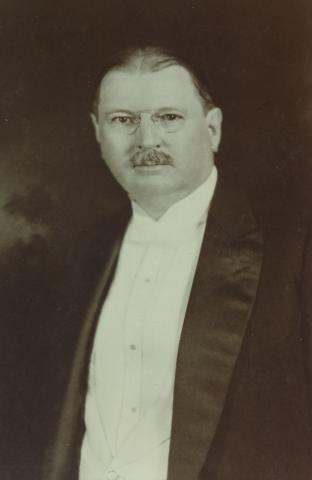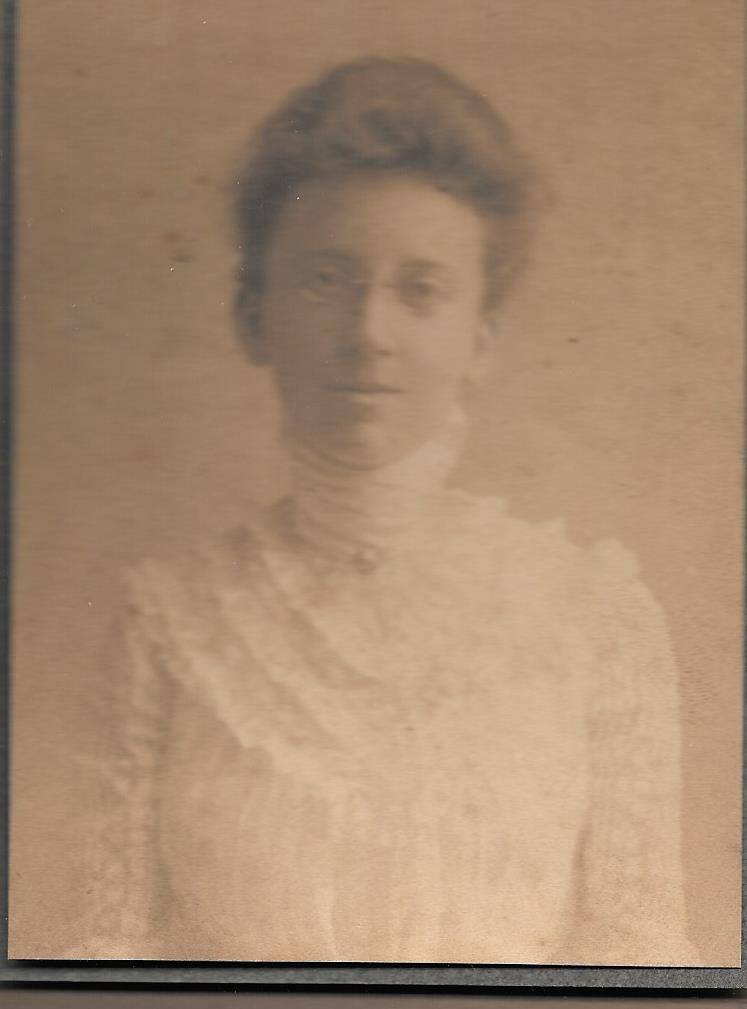Edward Lincoln Farr

By Lou McCall
Born in Maine in 1861, he was the son of Lincoln D. Farr ( of Bailey and Farr Manufactory in Camden, previously know as Farr’s Oil Cloth Works ) and Hannah Bailey Farr (daughter of a leading oilcloth manufacturer and niece to CM Bailey, a financial magnate and oil cloth manufacturer). He hails from a long line of Quakers and Puritans dating back to Plymouth Rock.
Edward Farr’s family’s New England heritage were recognized authorities in the oil cloth textile trade from the early 1800’s subsequent to the family’s pursuit in farming as early pioneers. In 1875 the family purchased an oil cloth factory in Camden, NJ that they enlarged to further develop the family business. Oil cloth, originally an English developed product where resins and pigments are impregnated on cloth to make waterproof floor and roof coverings (later used for tablecloths and other domestic uses). Oil cloth was first popular in 18th century and was again further developed with the Frederick Walton’s patent for linoleum in 1863.
During 1993, my wife Vicki and I visited with Edward Farr’s son Wallace to learn more about his father and what it was like to grow up in Wenonah near the turn of the (twentieth) century. During that visit, we also learned about his father’s ventures, notably including how the Farr and Bailey Co. would buy clipper ship sails from the captains at eastern seaports, bring them back to their family’s plant in Camden where they were stretched and applied with resins and pigments to produce the oilcloth. Upon the death of his father Lincoln D. Farr, Edward L. Farr took over the operations as President at the Bailey and Farr Manufactory at 7th and Kaighns Ave in Camden, NJ (the long prominent building still stands today as rebuilt after the previous one being lost to fire in 1896. Edward utilized the same Philadelphia architect who he used with his home).
Edward’s pursuit of the industry’s progression from oilcloth to linoleum to further progressing then existing technologies to ultimately produce a linoleum floor covering closer to what we know today. This led to the Company’s eventual merger of it’s business with Congoleum.
Mr. Farr’s influence in Camden NJ’s business and as well as his membership in the Union League of Philadelphia, led to a close relationship to the then president of the Pennsylvania RR, whose subsidiary, the West Jersey and Seashore was always looking for new promotion of South Jersey’s development. According to son Wallace Farr, it was over a lunch that the President of the RR promised Edward that Wenonah would get the “crown jewel” of stations for his continued assistance in its development. Edward Farr’s industrialist and prominent standing in the Delaware Valley lent to an interesting life involving other interesting friends, including John Wanamaker who later assisted him in decorating his residence in Wenonah.
Edward Farr originally married Mabel Greene. His home at 300 East Mantua Avenue was under construction at the time (where he not surprisingly had oil cloth used as sheathing). During their marriage they mostly remained with Edward Farr’s mother, Hanna Farr, at 200 East Mantua Avenue (now a dentist office). Just prior to the completion of the new house a block away, Mabel passed away. Edward Farr eventually moved into the new house at 300 East Mantua Avenue as a widower with five children. Their new home sat on approximately five acres and included a carriage house, a poultry house (Edward exchanged poultry products for milk with neighbor Comey who had cows), a pond, a separate lake and adjoining icehouse (fed annually by ice carved from the lake and dragged by horse up a hill into the nearby icehouse)~ all collectively named by Edward Far “Littlegrange” (after the English home of Edward Fitzgerald, translator of the “Rubiayat of Khayyam”). Littlegrange was started many years prior to it’s original completion in the 1890’s and often was altered after Edward’s trips to Europe where he would find new ideas and products.

Photo shared by Jean Marie Puhlman
After his first wife’s passing, Edward met and married Bertha Wallace. Together they had six children together. Edward found the house then needing expansion and added an addition for the growing family, which was completed in 1910. The eleven children, Edward, Walter, Thomas, Wallace, Jean, Bertha, Elizabeth, Edith, Alice, Ruth, and Margaret all grew up in Wenonah, and the house stayed in their family until the death of their mother, Bertha, in 1952. Son Wallace said his mother’s Bertha’s wish upon her death was an offer that any of the original children have the opportunity to return to the house in Wenonah with all expenses covered for years. Unfortunately at that time the children were quite mature and dispersed throughout the county, so no takers were found and the house left for the first time left the Farr family in mid 1950’s. Although Edward L Farr passed in 1924 (Wallace stated he thought his Father’s love of creamy soups from a neighboring soup factory did not do him well), he left behind a legacy of a life well lived and to be proud of. Besides raising one of the largest of families in Wenonah, he served as President of Farr and Bailey Manufactory, President of Camden Safe Deposit and Trust Co., Chairman of the Board of Cooper Hospital (which he helped found and develop in honor of his first wife), President of the Wenonah Public Library (which he had built and donated to the town), Clerk for the Wenonah Board of Education for 25 years, member of the Union League in Philadelphia, the Cape May Golf Club, and the Corinthian Yacht Club of Cape May.
He was often found on the train with his family between his summer home in Cape May and Wenonah. Son Wallace fondly remembered times with his father, including how Edward would like to carry him and the other small children up the stairs to the nursery on Christmas morning (where the tree and presents were) to far away family outings (Edward enjoyed long early motorcar trips or sailing trips to Europe).
Edward Farr shared his fortune with many philanthropic endeavors. He gave funds to needy children to help with education, he helped widows and children including anonymously helping those in financial need find a home in Wenonah, and served as Treasurer and Secretary for the West Jersey orphanage. He was an unassuming man and much of his charitable efforts were done anonymously. Besides a love of reading, Edward was an avid arborist as evidenced by unique specimens planted around his home in Wenonah. He and his family provided financial support for the development of Wenonah’s First Presbyterian Church, along with close friend and neighbor Thomas Synott. Edward’s son Wallace spoke of how his father would retreat to the Union League in Philadelphia to avoid Berth’s direction of the semiannual spring and fall total cleanings from top to bottom of Littlegrange. He and his wife Bertha Wallace Farr (June 3, 1878 - April 5, 1952) and two of Edward’s eleven children (Thomas Manchaster Farr 1905-1976, a longtime Camden attorney, and Bertha Farr Benjamin Eggert 1917-1989) are buried in the upper eastern ridge of the Wenonah Cemetery in Mantua, NJ.
During my visit with Edward’s son Wallace in 1993, I was asked to trim up the bushes around his father’s grave in the Wenonah Cemetery and to mail him a picture as he knew time would not allow him another visit to Wenonah. Of course this was happily done and the least one could do as Edward Farr’s spirit for Wenonah, his contributions and love for the town remain evident even today.



